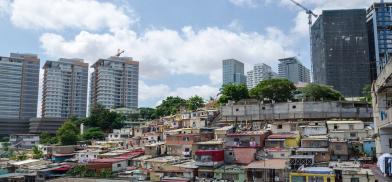Growing income disparities in India can upset social equilibrium
How does India compare with the South Asian neighbourhood? The World Inequality Lab database indicates that regional disparities are less than India’s, writes N. Chandra Mohan for South Asia Monitor

A dominant figure in sensitizing the world about the widening income and wealth disparities surely is Thomas Piketty. His magisterial work "Capital in the Twenty-First Century" published in 2014 demonstrated that rising inequalities were a byproduct of faster economic expansion in developed countries with a relatively higher rate of return on capital than growth.
He is a key collaborator of the latest World Inequality Report 2022 that maps out the contours of the highly unequal world we live in. This report is the flagship product of the World Inequality Lab prepared under the leadership of Lucas Chancel and coordinated by Emmanuel Saez and Gabriel Zucman. Hundreds of researchers have contributed to building a database to generate internationally comparable estimates of income and wealth disparities over long periods of time.
Wealth concentration
The report highlights the inexorable trend of increasing concentration of income and wealth among the top 10 percent or top 1 percent of the global population. This is certainly not good news for the social fabric as it can trigger a political backlash like the Occupy Wall Street movement not so long ago. A simple measure of income and wealth inequality is what accrues to the top 10 percent of the population relative to the poorer half of the population.
If all incomes or wealth were split equally, the top 10 percent would capture exactly 10 percent of global income while the bottom 50 percent would garner 50 percent. There would be maximal inequality if the top 10 percent grabs 100 percent of global income while the bottom half gets nothing. These two extreme situations define the boundaries of global inequality.
Currently, the top 10 percent take 52 percent of global income while the poorest half earns 8.5 percent. Disparities in global wealth are more striking as the top 10 percent own 76 percent of all wealth and the bottom 50 percent own barely 2 percent. “The world seems closer in 2020-21 to the absolute inequality benchmark described above than to the absolute equality benchmark,” according to the report.
Unequal India
India emerges as one of the extremely unequal countries - barring Brazil - with the top 10 percent garnering 57.1 percent of national income while the share of the bottom 50 percent is 13.1 percent. The top 10 percent earn 22 times more than the average income of the poorest half of the population. Income inequality in India is higher than in China where the top 10 percent takes 41.7 percent of national income while the bottom 50 percent earns 14.4 percent.
On the wealth front, disparities are much worse as India has the “dubious distinction” of the largest number of billionaires per trillion dollars of Gross Domestic Product. The ranks of millionaires and billionaires are growing every year, especially since the mid-1980s. Many of them have amassed wealth from land, real estate and natural resources due to proximity to the government. This eliminates competition and slows growth.
The frothy stock market boom during the coronavirus pandemic of 2020-2021 despite weak economic fundamentals further contributed to their accumulation of wealth. The top 10 percent have captured 64 percent of India’s wealth while the poorer half of the population owns only 5.9 percent. The average wealth of the top 10 percent is 55-times that of the poorer 50 percent.
South Asia not as bad as India
How does India compare with the South Asian neighbourhood? The World Inequality Lab database indicates that regional disparities are less than India’s.
As against India’s income share of 57.1 percent of the top 10 percent and 13.1 percent of the bottom 50 percent, in Bangladesh the corresponding proportions are less concentrated at 42.9 percent and 17.1 percent respectively. In Pakistan, the top 10 percent captured 43.3 percent of national income while the poorer half of the population earned 14.1 percent.
The top 10 percent in Nepal accounted for 41.9 percent of national income while the bottom 50 percent got 16.7 percent. It’s a bit more unequal in Sri Lanka where the top 10 percent grabbed 49.4 percent of national income while the bottom 50 percent got only 14.1 percent. South Asia may be poor, but not as unequal as India.
India emulates US
The trend of growing disparities in India clearly follows the US pattern, where CEO pay has widened substantially vis-à-vis American worker’s income. The massive and growing concentration of incomes has also eroded the tax base of the exchequer as these incomes escape the gaze of the taxman. The report advocates progressive taxation of income and wealth. After all, the rise of modern welfare states in the 20th century was linked to the rise of steeply progressive taxation.
Even with a modestly progressive wealth tax in India, such revenues can sustain a quasi-universal basic income scheme for farmers or the national employment guarantee scheme, among other priorities The need is to act before the widening rich-poor gap adversely impact social equilibrium.
(The writer is an economics and business commentator based in New Delhi. His views are personal. He can be contacted on nchandramohan@rediffmail.com)









Post a Comment